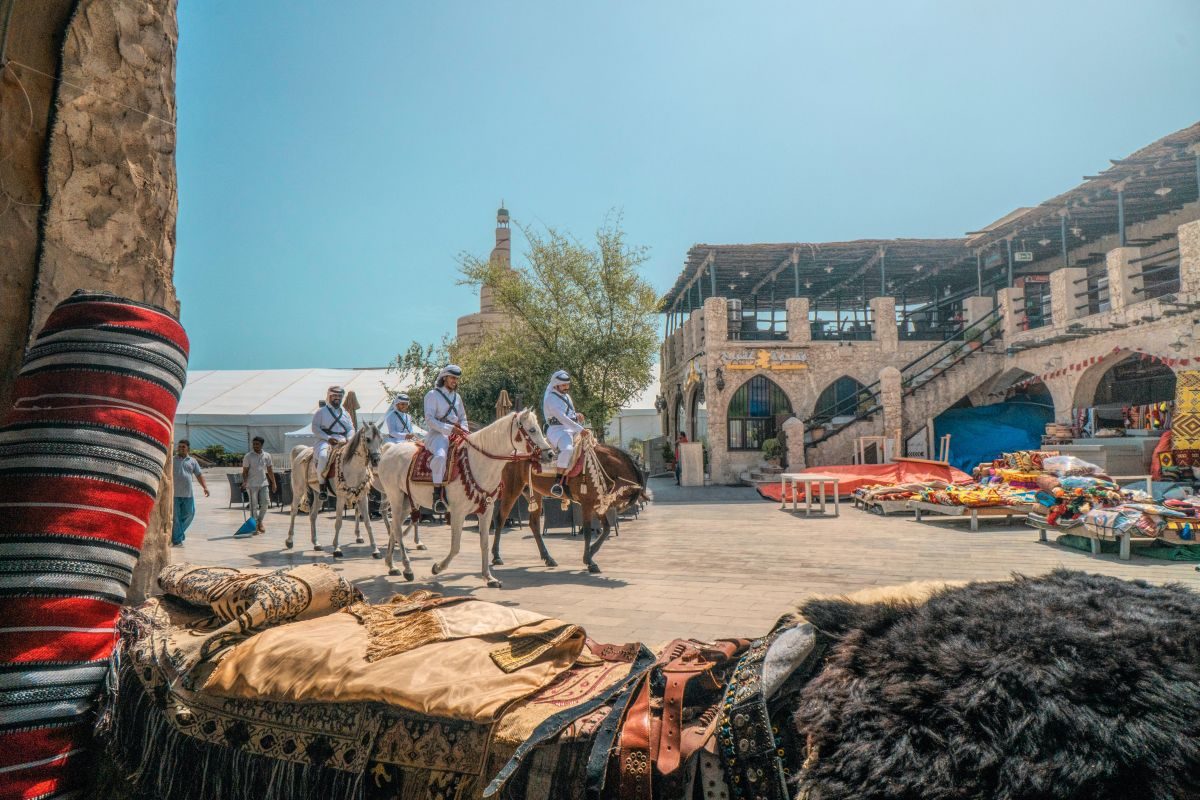I believe all of you will agree with me that the mass media represents Arabs and Muslim people in general as violent, tolerance-lacking individuals who wish to bring nothing but havoc into this world. Undeniably, you have seen a movie where the bad guy is, of course, an Arab who goes around and kills people without a blink of an eye.
Unfortunately, all these representations have made people believe that Arabs are not good people, and a large percentage of the population always associate them with terrorist attacks, crimes, and hatred. In the next paragraphs of today’s article, we will list the most common and wrong stereotypes about Arabs and will try to explain in the best possible way why all of them are completely wrong.
Top 3 Stereotypes about Arabs That Are Completely False
Myriads of people have formed a poor opinion about Arab people because of the numerous wrong representations shown on the news, movies, TV series, and even music videos. All these factors combined together have, unfortunately, resulted in a huge misconception many believe in. Nevertheless, I believe it is high time someone put an end to this. Therefore, I have decided to go through several stereotypes regarding Arabs and explain why they are awfully wrong. Here is a list of them:
- All Arabs Are Muslims
- All Terrorists Are Arabs
- Arabs Are Violent People Because of the Islam
I truly hope that with the following imparted information, I will succeed in my endeavor of changing your views about the Arab culture and its beliefs. Allow me to clarify that this post has nothing to do with spreading religion or anything like that. On the contrary, my single aim is to deliver some useful and essential data that will make you realize that those common stereotypes are actually untrue.
All Arabs Are Muslims
This statement is so common that many individuals are surprised to find out that not all Arabs are Muslims. In fact, there are Arabs who are Christians or Druze. There are even Arab people who have no religion. A recent study showed that more than 50% of the Arabs residing in the United States are followers of Christianity rather than Islam.
Considering this, it is advisable to not label every Arab as Muslim and to not consider every Muslim an Arab. Muslims’ religion is Islam, but, as foresaid, many Arab people believe in Christianity. Some of the countries with the largest Arab population are Algeria, Jordan, United Arab Emirates, Palestine, Sudan, and Morocco.
All Terrorists Are Arabs
Now, that one is perhaps the worst misconception when it comes to Arab people. Millions of people associated terrorism with Arabs. One of the reasons for this is the fact that 90% of the time, terrorists in movies or TV shows are Muslims or Arabs. In addition to this, it is quite common to see news on the TV regarding a terrorist attack, and most of the time the criminal is said to be an Arab.
There are some cases when the terrorist is unknown, but it is suspected that, most likely, he is a Muslim. All this improper information has transformed people’s thoughts about Arab people, and, honestly, they have certainly contributed to the present existence of racism. A large number of people are prejudiced about the Arabian population and believe in all these incorrect stereotypes.
It is so common for the mass media to present Arabs as terrorists and bad people, that even in comedy movies, the bad guys are often wearing a keffiyeh. For those of you who are unfamiliar with this term, this is a traditional head-cloth worn by Arab people. We live in the 21st century, so it is about time the media changed the way it portrays this community.
Arabs Are Violent People Because of the Islam
We have mentioned that a considerable percentage of Arab people are not actually Muslims. However, it is an undeniable fact that most of them belong to Islam. And Islam, on the other hand, is often shown as a religion that is violent, restrictive, and bad in general. That, of course, leads to the creation of other stereotypes about Arab people, most of which are completely untrue.
All those misconceptions about Islam, combined with the portrayal of Muslim people in movies, have resulted in the establishment of a number of wrong beliefs about this community. Individuals refuse to dig deeper into the Islamic religion. They come across an article saying that Islam is violent and cruel, and they are done reading for the day.
The truth is that all this lack of proper information is one of the major reasons why a huge part of the population refuses to learn more about Arabs, their culture, traditions, and customs. As I have stated before, the creation of this website is an attempt to help people learn more about all these things, and let go of such vicious and fallacious categorizations.



 Well, I think the time has come for us to get to know each other a bit better! That’s why I want to share a short story of my everyday life with you. It’s not a very special one, however, it brought a lot of memories and I admit a lot of nostalgia too. Here it is!
Well, I think the time has come for us to get to know each other a bit better! That’s why I want to share a short story of my everyday life with you. It’s not a very special one, however, it brought a lot of memories and I admit a lot of nostalgia too. Here it is!  Without using Google, can you think of the name of a single Muslim character from a movie you’ve seen? Could be any character from any movie that came out at any point, as long as you can remember their name. If you can’t, that’s perfectly understandable, and if you can, well, you’re probably thinking of either Aladdin, or a terrorist. Sadly, there’s plenty of movies, TV shows and videogames where Muslims are depicted as the enemy, to be heroically shot down by the white American protagonist. “Call of Duty 4: Modern Warfare”, “Iron Man”, “American Sniper”, “24” and even “Back to the Future” – a family-friendly film all about a boy time-travelling and having to deal with his mom falling in love with him – all feature Middle-Eastern terrorists coming about and making life miserable for the white protagonists. It’s, admittedly, a rather depressing state of affairs, one that has been talked to death and that no one seems to really support, and yet one that doesn’t really seem to change. How come?
Without using Google, can you think of the name of a single Muslim character from a movie you’ve seen? Could be any character from any movie that came out at any point, as long as you can remember their name. If you can’t, that’s perfectly understandable, and if you can, well, you’re probably thinking of either Aladdin, or a terrorist. Sadly, there’s plenty of movies, TV shows and videogames where Muslims are depicted as the enemy, to be heroically shot down by the white American protagonist. “Call of Duty 4: Modern Warfare”, “Iron Man”, “American Sniper”, “24” and even “Back to the Future” – a family-friendly film all about a boy time-travelling and having to deal with his mom falling in love with him – all feature Middle-Eastern terrorists coming about and making life miserable for the white protagonists. It’s, admittedly, a rather depressing state of affairs, one that has been talked to death and that no one seems to really support, and yet one that doesn’t really seem to change. How come? Pop quiz! Tell me the first Muslim hero from a movie, game, comic or TV series that pops into your head! When I say “hero”, I basically mean “not a terrorist”. Go! … What, do you need a little bit more time? It’s fine, I’ll wait for a while. Still drawing a blank, huh? Yeah, sadly, those who believe in the Islamic faith are rarely depicted as anything more than fanatics who want to blow stuff up… Which, honestly, isn’t that surprising considering the fact that this is generally how the West perceives Muslims. Can you blame them, though? Even though the overwhelming majority of Muslims – especially those living in America – just want to live normal, peaceful lives, that’s not the people the news report about. “Man opens fire in a gay nightclub while screaming Allahu Akbar”, “Refugees rape dozens of women in a single night”, “Bomb threat by Arab man prevented”…
Pop quiz! Tell me the first Muslim hero from a movie, game, comic or TV series that pops into your head! When I say “hero”, I basically mean “not a terrorist”. Go! … What, do you need a little bit more time? It’s fine, I’ll wait for a while. Still drawing a blank, huh? Yeah, sadly, those who believe in the Islamic faith are rarely depicted as anything more than fanatics who want to blow stuff up… Which, honestly, isn’t that surprising considering the fact that this is generally how the West perceives Muslims. Can you blame them, though? Even though the overwhelming majority of Muslims – especially those living in America – just want to live normal, peaceful lives, that’s not the people the news report about. “Man opens fire in a gay nightclub while screaming Allahu Akbar”, “Refugees rape dozens of women in a single night”, “Bomb threat by Arab man prevented”… Hello once again! I’m happy to see that you’ve stuck around for so long – that means I’m able to keep your interest, which isn’t something I was confident I would be able to do when I started this blog! Unless this is the first article you read here, in which case… Welcome to the blog! I recently wrote
Hello once again! I’m happy to see that you’ve stuck around for so long – that means I’m able to keep your interest, which isn’t something I was confident I would be able to do when I started this blog! Unless this is the first article you read here, in which case… Welcome to the blog! I recently wrote 